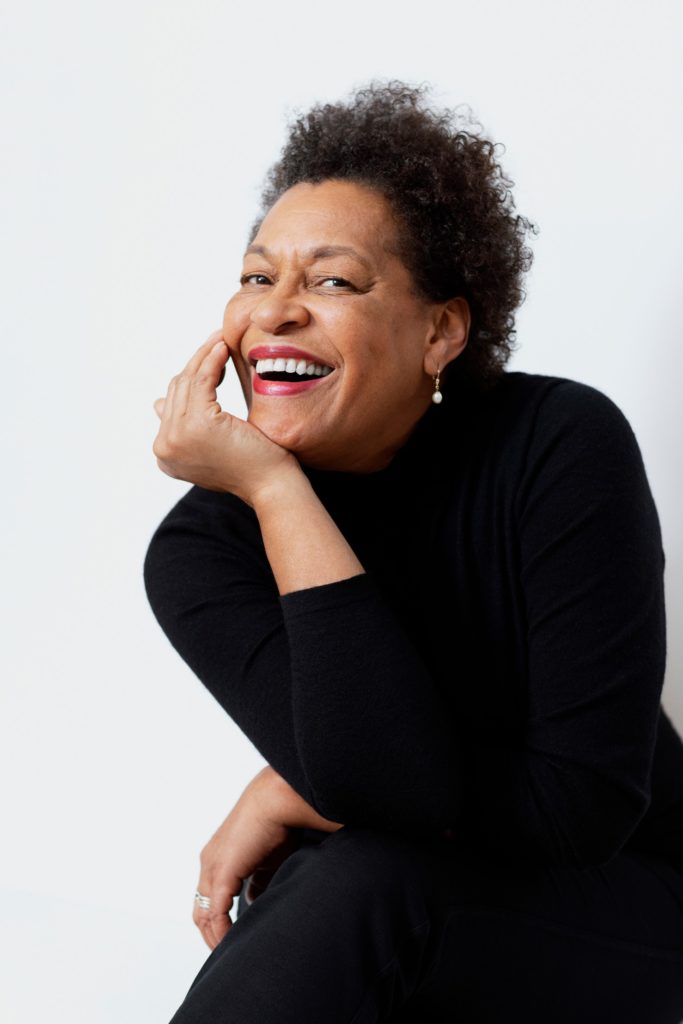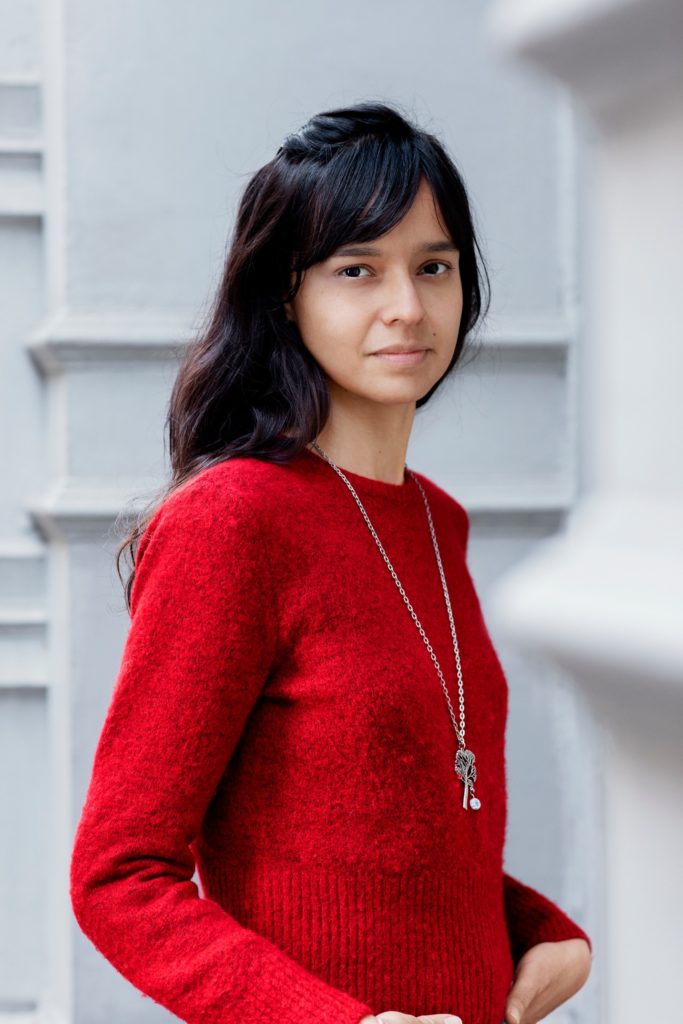Since its inception in 2002, the Rolex Mentor and Protége Arts Initiative Programme has paired influential figures with up-and-coming artists across film, dance, theatre, literature, architecture, visual arts and music, with the goal of enriching and strengthening global culture. For the 2020-2021 programme, the mentors include Spike Lee with Kyle Bell for film, Phyllida Lloyd with Whitney White for theatre, Carrie Mae Weems with Camila Rodriguez Triana for visual arts, and Lin-Manuel Miranda with Agustina San Martin for the open category. Aside from the challenges they’ll face this year, the group is looking forward to collaborating together, creating beautiful and thought-provoking work and relationships. We spoke with mentor Carrie Mae Weems, and protégé Camila Rodriguez Triana of the visual arts category about their separate thoughts and experiences going into the 2020-2021 Rolex Mentor and Protégé Arts Initiative Programme.

Carrie Mae Weems – Rolex Mentor
What convinced you to participate in the Rolex programme?
“Many years ago I was invited to the Rolex [Mentor and Protégé Arts Initiative] gala at Lincoln Center. It was a beautiful evening and I remember that the great Jessye Norman was there as a mentor. I realized that Rolex was providing a unique, one-of-a-kind programme, that it was a terrific and worthy programme offering a once in a lifetime experience to young artists, to artists of all ages—and for both the mentee and mentor. Mentoring is a back and forth experience, not simply a one-way street. It is a dynamic relationship. So, based on what I had learned that night many years ago, when Rolex called asking me to be a mentor, I was just knocked out. I never thought that I would be a mentor in the Rolex programme. But I am very happy to be.”
Did you have a mentor to guide you in your career?
“No, not formally or not in the way that I attempt to mentor. I have had close friends who have looked out for me, but mentorship is more than this. I am not sure why, but, unfortunately, I’ve been left on my own. Perhaps it has something to do with my temperament, along with the fact that I am a woman—a black woman to boot. Historically the contributions of black women have been undervalued, so racism and sexism have impacted my life, and had their way with me. At a certain point, I came to realize that I had to use my own determination and grit to push against the headwind. Like it or not, I am a woman who made her own way and I’ve come to appreciate the fact.”
At this stage of your career, do you feel a responsibility to pass on your experience to a younger practitioner/future generations, or as Rolex describes it, to perpetuate knowledge?
“As an artist, teacher, friend, or colleague, I see it as a responsibility and a duty, as a gift and as a challenge to provide guidance, to share ideas, information, resources and questions—and contact is important. Sharing these things with the right person gives me joy.”
Why did you choose Camila Rodríquez Triana as your protégée?
“Rolex presented three remarkable women [as potential protégées], each one with wonderful credentials, but Camila stood out. Of the three, she was not the ‘accidental artist’, but rather the one who had intensely pursued the goal of being an artist. Camilla has pursued the complexities of her art, of her own practice and of her place in the field. This separated her; she’s a young artist of vision and her level of engagement in the arts is profound. But, frankly, she was the more difficult choice; she’s not an easy person, she’s tougher and presents more of a challenge. Actually, she makes me bristle—but I understand, I do that to a lot of people.”
What qualities/skills does a person need to be a good mentor?
“To be a good mentor you have to really care about people. You have to really care about what they want and are trying to do. You must be a good listener. In mentorship, the fine art of criticism comes into play; you must know how to be critically helpful and not cynically critical. You must look at what they want and propel them forward in every way, offering what you can with generosity and purpose. I try to be observant, to understand their issues, goals, vision, focus and relationship to their practice. My goal is to speak to that and not to my own desires. The last thing you want is to destroy confidence rather than foster it—a mentor can do that if you are not careful. The important thing is not to abuse one’s power as a mentor.”
Given the current lockdown conditions due to the Covid-19, how will you be pursuing the mentorship?
“I don’t see this as a major hurdle. Artists often work in isolation. Camila and I will speak by phone and video conference as often as possible; and, of course, I’m viewing her various projects, preparing notes and looking forward to long and stimulating conversations; so we are moving forward in a positive way. Of course, it would be lovely if she were here next to me— other things happen when you are in the same room—but we’ll survive. For the time being, Camila and I will communicate virtually. What’s important is that we are both working. I am using the time to reflect and quietly work on major projects without disruption. To describe the situation, I use the expression: ‘turning lemons into lemonade’. “

Camila Rodriguez Triana – Rolex Protégé
How did you feel when you learned that Carrie Mae Weems had chosen you as her protégé?
“Wow! Receiving this news was very exciting. I felt very happy and privileged. I think that all the finalist artists had a very interesting job and for me, it was a blessing that she chose me. I felt very grateful.”
How do you think that the mentorship will affect your work and influence the way your future will unfold?
“I feel that next to Carrie Mae Weems I can learn to trust in myself and in my work. Sometimes I feel that I lack confidence and security and I think I can learn this from her. In my creative process, I sometimes have many doubts, I think I’m in a constant search for my identity and my security and I believe that next to Carrie Mae Weems, observing her, facing different social situations, sharing with other artists and showing my work can strengthen my security and confidence.”
What do you think it might be like to collaborate with her over the mentoring period?
“I believe that I will have the opportunity to observe the creation process of Carrie Mae Weems and perhaps be part of it. I wish I could collaborate with her and she can also participate in my creative process, and share with her my projects, receive some comments, have discussions, conversations. At the end of this process, I would like to have finished work and perhaps be able to exhibit it.”
What would you like to achieve?
“For me it is important that at this time my work can be seen by more people in the art world, I would like to have the opportunity to share my work with more people such as curators, gallery owners, maybe to make an exhibition.”
Just as your mentor will pass down her knowledge and experience to you, do you see your responsibility as similarly passing on the knowledge you gain to others in your own community?
“I believe that life is a balance of giving and receiving. So it will be important for me to be able to share what I will receive during this year not only with the people in my community but with the people around me in general. To be able to share what I will learn, my reflections, but from my own work, from the transformation of my work.”

